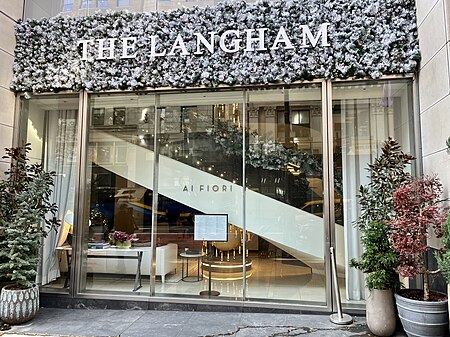Ai Fiori
European restaurants in ManhattanFifth AvenueMichelin Guide starred restaurants in ManhattanNew York City restaurant stubs

Ai Fiori is a restaurant in New York City. The restaurant serves French and Italian cuisine. Ai Fiori has received a Michelin star, but lost it in 2022.
Excerpt from the Wikipedia article Ai Fiori (License: CC BY-SA 3.0, Authors, Images).Ai Fiori
5th Avenue, New York Manhattan
Geographical coordinates (GPS) Address Website Nearby Places Show on map
Geographical coordinates (GPS)
| Latitude | Longitude |
|---|---|
| N 40.75 ° | E -73.983888888889 ° |
Address
400 Fifth Avenue (Langham Place)
5th Avenue 400
10018 New York, Manhattan
New York, United States
Open on Google Maps






